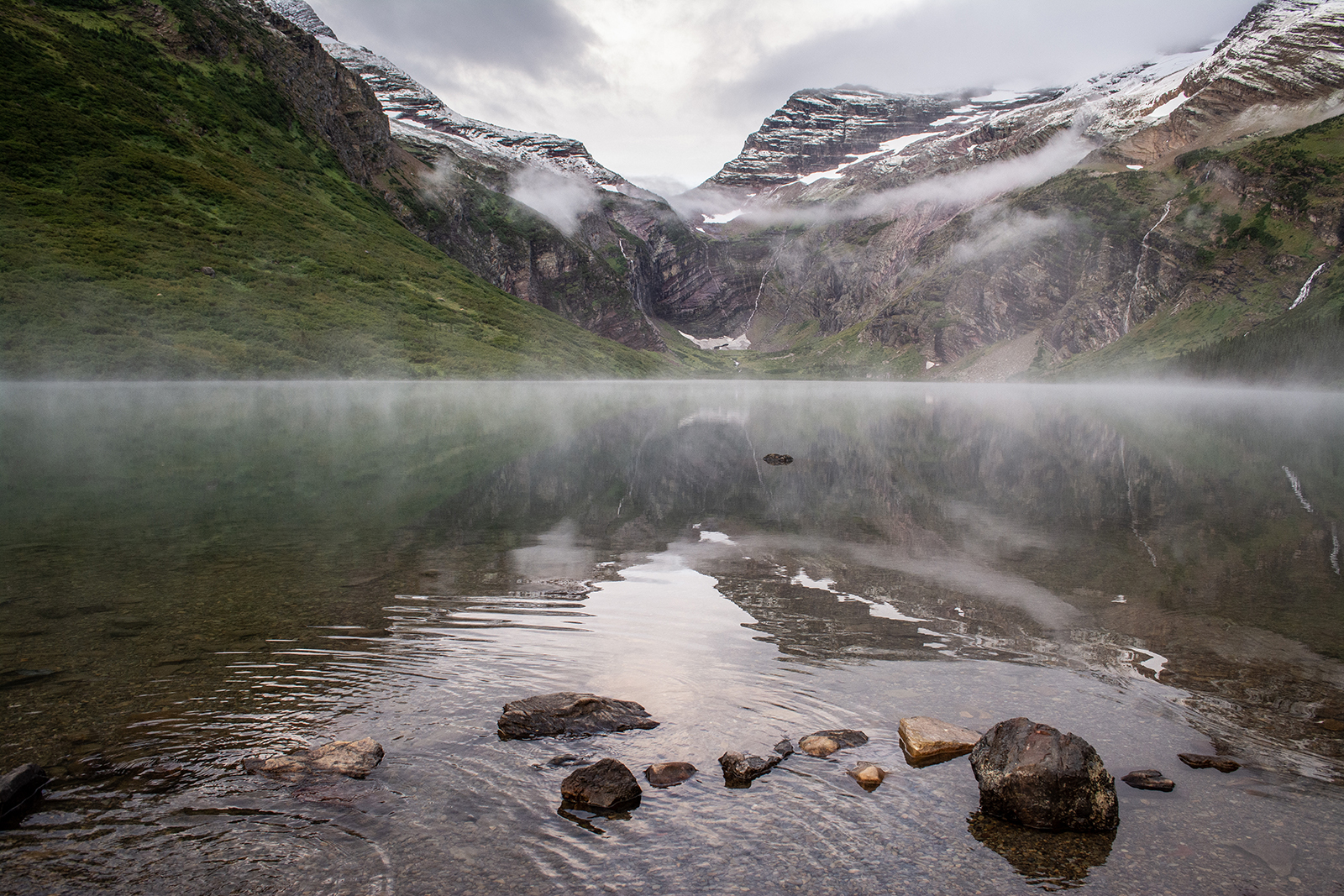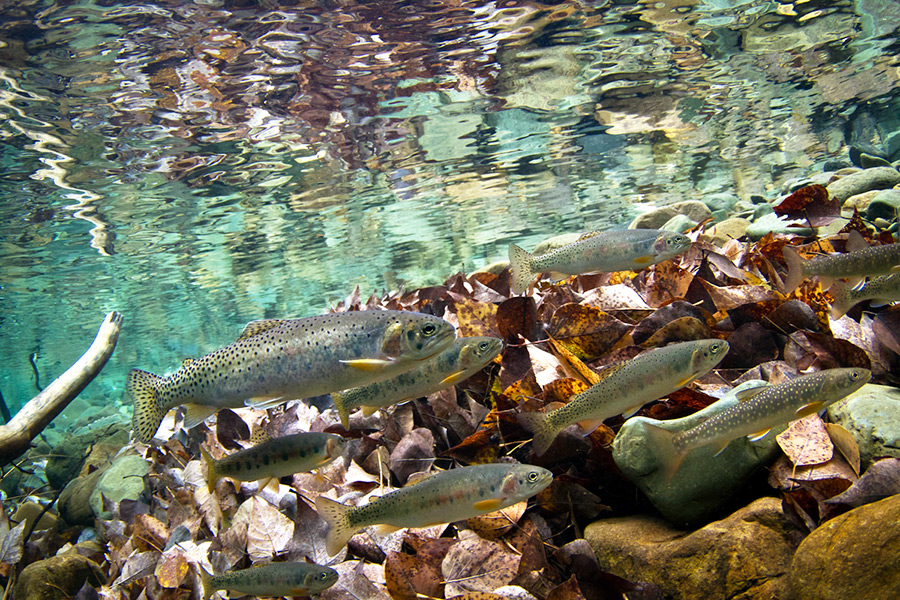Glacier Park Approves Native Trout Preservation Project on Gunsight Lake
Fisheries managers plan to remove non-native rainbow trout from the alpine lake using a fish toxicant and replace them with genetically pure strains of westslope cutthroat and bull trout
By Tristan Scott
Glacier National Park fisheries managers will move forward with a conservation project that involves lethally removing non-native rainbow trout from Gunsight Lake and replenishing the alpine watershed with genetically pure populations of native westslope cutthroat and bull trout, as well as mountain whitefish.
The National Park Service (NPS) announced Monday that it had approved the “Glacier National Park Westslope Cutthroat and Bull Trout Preservation Project” after the agency’s regional director signed a Finding of No Significant Impact (FONSI) for the environmental assessment (EA) that scientists prepared for the project. The site of the project is located north of Mount Jackson at the headwaters of the St. Mary River, which is the last drainage east of the U.S. Continental Divide to support native bulls.
“The project is needed to remove the ongoing risk of hybridization to native westslope cutthroat trout downstream of Gunsight Lake and provide westslope cutthroat and bull trout with habitat that is secure from the threats of hybridization and climate change,” NPS stated in its decision approving the project.
Several environmental groups pushed back on the project during its public comment phase earlier this year, comparing the initiative to “playing god with the fisheries” and arguing that Gunsight Lake, which was historically fishless, should remain so in accordance with the park’s policy of managing its nearly 1 million acres as wilderness.
The project, which involves the use of a fish toxicant called rotenone to kill off Gunsight’s existing population of non-native fish, as well as the use of helicopters, motorboats and generators, does not align with the Wilderness Act’s recommendation that the land remain “untrammeled by man,” according to comments submitted by the environmental groups.
However, the park’s fisheries managers said the presence of non-native rainbow trout pose a risk to downstream native fish populations that occupy an ecological stronghold, and that “in order to address this risk, action would need to be taken at Gunsight Lake, which is in the park’s recommended wilderness.”
“The EA evaluated the project’s impacts to park resources, and the FONSI documents the conclusion that implementation of the project will not result in significant adverse impacts,” according to Monday’s announcement, which explained that project activities will begin late August or early September of 2023.
The treatment area will be temporarily closed to the public during rotenone application and detoxification. Glacier Park officials anticipate closing Gunsight Pass Trail for approximately one week to prepare the lake for treatment. The closure will extend from Reynolds Campground junction and just east of Gunsight Pass. The Gunsight Lake wilderness campground will close Sept. 1, 2023 until spring 2024.

Because the project involves the translocation of native species to Gunsight Lake, fisheries managers have identified potential donor source locations within the larger St. Mary River drainage, including: Canyon, Jule, Rose, Two Dog, Wild, Divide, Boulder, Swiftcurrent, Kennedy, Otatso, Midvale, and Lee Creek drainages, among other streams, as well as Slide and Red Eagle Lakes.
As the last drainage east of the U.S. Continental Divide to support native bull trout, the St. Mary River drainage is a rarefied ecosystem that has experienced dramatic declines of its native fish populations. Today, all but one of its remaining westslope cutthroat trout populations have some level of hybridization with either non-native rainbow or Yellowstone cutthroat trout, and researchers say that without proactive management intervention their long-term persistence hangs in the balance.
A tributary of the South Saskatchewan River drainage, the St. Mary River drainage now supports hybrid species that lack the genetic and behavioral adaptations that native species have adopted over the course of millennia. Because the genetically impure populations radiate outward from infested lakes, including Gunsight, they have compromised the entire watershed. Although Gunsight Lake was historically fishless, it was stocked in 1916 with 35,000 non-native cutthroat trout and again from 1920 to 1936 with 224,000 rainbow trout.
The rainbow trout established a self-sustaining population that exists today, outcompeting the introduced cutthroat trout and providing visitors to the backcountry lake with ample angling opportunities — as well as a perpetual source of genetic inferiorities passed along to downstream fisheries.
While rotenone is registered with and approved by the U.S. Environmental Protection Agency, and degrades naturally with sunlight and water movement, project managers will use a neutralizing agent to hasten the detoxification process. The neutralizing agent, potassium permanganate, is widely used for the treatment of municipal drinking water and wastewater, according to officials.
“Both rotenone and potassium permanganate will dissipate with no detectable long-term changes to water quality,” according to the FONSI.
Project funding is being provided by the NPS Natural Resources Preservation Program and the Glacier National Park Conservancy.